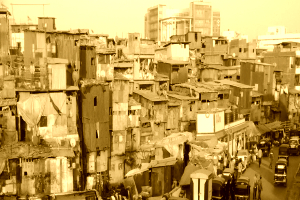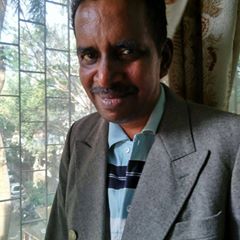
Sunday Snippets
 By Venkatesh Raghavan
By Venkatesh Raghavan
When I interacted with the locals of Behrampada during the Bombay riots
I had just finished my matriculation exams and the summer holiday was stretching long. In those days, the transistor at home was the only source of entertainment with filmi songs being played in Vividh Bharati and All India Radio (AIR) Urdu service. When it came to the outdoors, it was either cricket or bathing in the open seas. Besides, I used to keep an eye on the entertainment page of The Indian Express to scan for movies that can be viewed in an affordable theatre.
It was a Friday evening and I saw that “Don” was being screened at Kala Mandir talkies at Bandra in suburban Mumbai. I got talking to friends and learnt that the theatre had very affordable rates. It was my first visit to Kala Mandir and also my earliest memory of the Behrampada slums. There used to be goats running helter-skelter. There used to be hawkers selling fruits and food items. The surrounding slum area had to be crossed before I could reach and cross the main road and head towards the talkies.
The ticket for the stalls was priced at Rs. 2.50. After an enjoyable watch that included smoking two cigarettes during the interval, I made my way back to the station on foot. Subsequently, during my early college years including my graduation days, I used to frequent Kala Mandir to watch my preferred list of movies. Those were the days when no one gave a thought to religion or which community anyone belonged to. I happened to cross the Behrampada stretch on numerous occasions. At times, when I felt there was enough money in my pocket, I also used to buy grapes from the hawkers at very cheap prices.
Nearly a decade had passed and my career in journalism had graduated from being a freelancer to a full-fledged journalist in The Free Press Journal. The year was 1992 when riots shook Bombay following the demolition of the Babri mosque in Ayodhya. I had begun by covering the riots taking place in minority-dominated areas located in South Bombay besides watching the proceedings in centrally located Dadar and Parel areas of the city. Around mid-afternoon, I got talking to a colleague and decided to visit Behrampada after being informed that it fell among the curfew-infested sensitive spots.
Being familiar with the locality after having crossed the stretch on several occasions, I felt no fear or dread about visiting the spot. Past the curfew post, I interacted with the locals of Behrampada. I was happy to learn that the Hindus in the Muslim-dominated stretch had no complaints and there was no violence happening from within the locality. The locals also emphasized that there were outsiders trying to provoke or instigate riots. However, the people held their peace and decided to stick together in such a crisis hour.
While it became the front-page story in The Free Press Journal, months later, a documentary was shown to the press about how peaceful the Behrampada spot had been during the 1992-93 riots. My next tryst with Behrampada was when I was returning from the Mid-Day office after submitting a review copy of my newly released book, “Operation Drug Mafia” and was looking for an auto-rickshaw to reach Bandra station. Luckily, I did not have to wait long and soon got into conversation with the driver. He informed me that he was a local of Behrampada. “Other than us local drivers, no one will agree to ferry you to the station,” he said. I talked to him about the old times and memories I had of crossing his locality. The driver, being much younger than me, said, “I have no knowledge of how tickets were priced at Kala Mandir talkies that you talk about. Any time you visit our area, you are welcome to have a cup of tea with us.”





